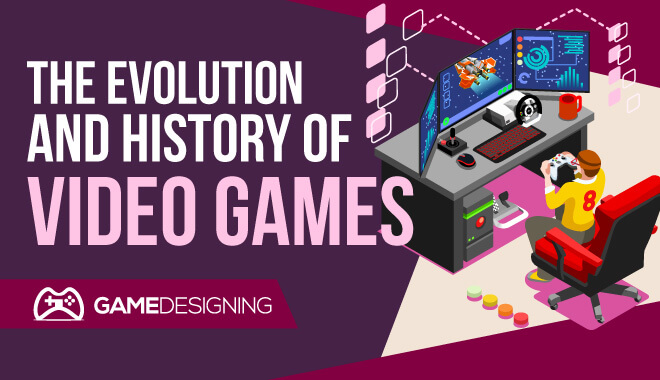From 2D to 3D: The Evolution of Animation in the Gaming Industry

From 2D to 3D: The Evolution of Animation in the Gaming Industry
In the captivating world of video games, where imagination knows no bounds, animation plays a pivotal role in shaping the player’s experience. From the earliest days of pixelated characters to the stunningly lifelike visuals of today, animation in gaming has undergone a remarkable evolution, gradually transforming how we experience virtual worlds. In this blog, we’ll embark on a simple and straightforward journey through the annals of gaming history to explore the fascinating transition from 2D to 3D animation. Along the way, we’ll uncover the technological advancements, artistic innovations, and the profound impact these changes have had on the gaming industry.
The 2D Era: Pixelated Beginnings
The journey begins with the 2D era, where pixels ruled the screen. In this pixel-perfect realm, characters moved with simplicity and charm. Games like “Super Mario Bros.” and “Pac-Man” captured the hearts of players with their iconic 2D animations. Back then, the limited technology required developers to rely on imaginative design and creative storytelling to engage players. It was a time when 2D animation was not just a limitation but a canvas for artistic expression.
The Advent of 3D: A New Dimension of Gaming
As technology advanced, so did the aspirations of game developers. Moreover, the advent of 3D animation marked a turning point in the gaming industry. Characters became three-dimensional entities with fluid movements, and virtual worlds were crafted with unprecedented depth and detail. This transition not only revolutionized gaming but also opened the door to storytelling possibilities that were once beyond reach.
Art Meets Technology: The Fusion of Realism and Creativity
The evolution of animation in gaming was not solely about technological prowess. It was a harmonious fusion of art and technology. Game developers embraced the challenge of creating increasingly lifelike characters and environments while preserving the creative essence of their games. Titles like “The Legend of Zelda: Ocarina of Time” showcased the artistic vision that could be achieved within this new 3D realm, with a balance of technical precision and imaginative storytelling.
The Modern Era: Where Animation Transcends Reality
Today, the gaming industry continues to push the boundaries of what’s possible with animation. Games like “The Last of Us Part II” and “Red Dead Redemption 2” deliver cinematic experiences that blur the lines between gaming and storytelling. Characters exhibit human-like emotions, and open-world environments teem with breathtaking realism.
The Power of Animation in Modern Gaming
In the modern gaming landscape, animation has evolved into a powerful tool that elevates the gaming experience to new heights. Beyond merely conveying movement, it now serves as a means of storytelling, emotional engagement, and immersion. The intricate facial expressions of characters, the fluidity of their actions, and the dynamic environments they inhabit all contribute to the sense of realism and wonder that modern games offer.
A World of Possibilities
The evolution from 2D to 3D has opened up a world of possibilities. Developers can now craft expansive, lifelike worlds where players feel like they are part of the action. The depth and realism of animation enable game creators to tell complex narratives, with characters that exhibit a wide range of emotions, from joy to sorrow, adding depth to the gaming experience.
Beyond the Screen
Today, animation in gaming extends beyond the screen. Virtual reality (VR) and augmented reality (AR) technologies are pushing the boundaries even further. VR places players in fully immersive environments, where every movement and interaction feels natural. Furthermore, AR brings the gaming experience into the real world, superimposing digital elements onto our surroundings.
The Future Awaits
Furthermore, as we move forward, the evolution of animation in gaming shows no signs of slowing down. Moreover, with the advent of ray tracing and AI-driven animation, we can expect even greater realism and interactivity in future titles. Furthermore, game worlds will become more vibrant and responsive, blurring the line between the virtual and the real.
Conclusion: A Thrilling Journey Continues
Additionally, it reflects not only the advancement of technology but also the boundless creativity of game developers. Additionally, as we look to the future, with the promise of virtual reality and augmented reality, the possibilities for animation in gaming seem limitless. One thing is certain: the captivating evolution of animation will continue to shape the way we play and enjoy video games ensuring that each new title is a visual and interactive masterpiece.
